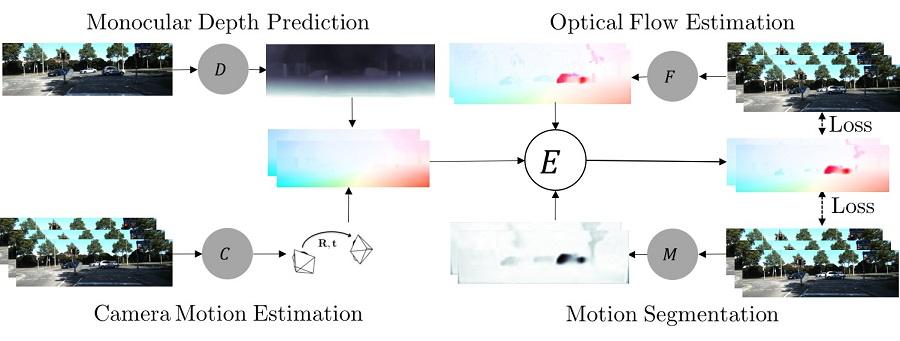Competitive Collaboration: Joint Unsupervised Learning of Depth, Camera Motion, Optical Flow and Motion Segmentation

We address the unsupervised learning of several interconnected problems in low-level vision: single view depth prediction, camera motion estimation, optical flow, and segmentation of a video into the static scene and moving regions. Our key insight is that these four fundamental vision problems are coupled through geometric constraints. Consequently, learning to solve them together simplifies the problem because the solutions can reinforce each other. We go beyond previous work by exploiting geometry more explicitly and segmenting the scene into static and moving regions. To that end, we introduce Competitive Collaboration, a framework that facilitates the coordinated training of multiple specialized neural networks to solve complex problems. Competitive Collaboration works much like expectation-maximization, but with neural networks that act as both competitors to explain pixels that correspond to static or moving regions, and as collaborators through a moderator that assigns pixels to be either static or independently moving. Our novel method integrates all these problems in a common framework and simultaneously reasons about the segmentation of the scene into moving objects and the static background, the camera motion, depth of the static scene structure, and the optical flow of moving objects. Our model is trained without any supervision and achieves state-of-the-art performance among joint unsupervised methods on all sub-problems.
